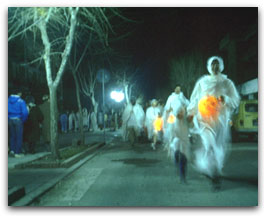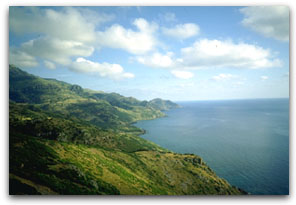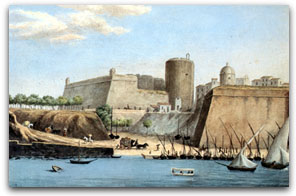Bosa's economy is
based on fishing, agriculture and tourism and it is well known both for its Carnival and
for 'Malvasia', an excellent wine, with a high alcoholic content that goes well with puddings
and desserts. Before leaving this city, it is a must to visit the Roman church
of S.Pietro Extramuros with its wonderful pink trackytic facade
in Gothic-Romanesque style. This church is situated after the trackytic bridge that welcomes
people entering Bosa by road.
|
|

 Carnival of Bosa Carnival of Bosa |

 The coast between Bosa and Alghero The coast between Bosa and Alghero |
|
After leaving Bosa, the seascape and the coast become rough
and wild with few lees or sheltered areas and almost no beaches. Even if there is a panoramic
road linking Bosa to Alghero, it is very difficult to reach the sea from the land. With luck, on a bright clear day, it
is possible to see the last colonies of griffons circling over the steep slopes of Capo Marargiu,
from which the harbour of Alghero can be seen
in the distance. |
From here to the ancient
Catalan city of Alghero, once called Barceloneta (which means little Barcellona), the landscape
changes colour and appearance continuously. This stretch of sea, which is rich
in large fish, is a real paradise for those professional divers who can cope with the depth of
these waters.
|
We were talking about Alghero and its Catalan origin. The coasts of Spain and Alghero face
each other across the Mediterranean. The Aragonesi landed on the coast of Alghero in
1353, where they found a fortress that had been built by the Dorias (a Genovese family) in the
XII century. The Catalan influence is still alive in Alghero. Its streets, shops, language,
the life style of the people, the food and traditions are all Catalan.
|
|

 Simone Manca: Alghero (watercolor 19th century) Simone Manca: Alghero (watercolor 19th century) |
|